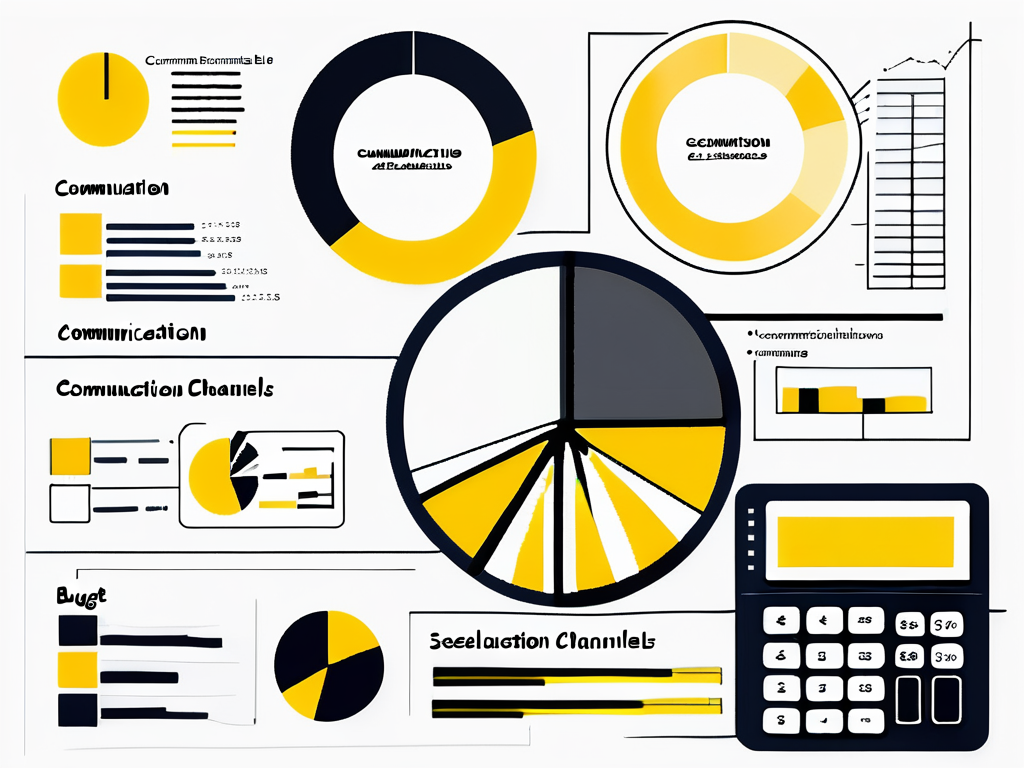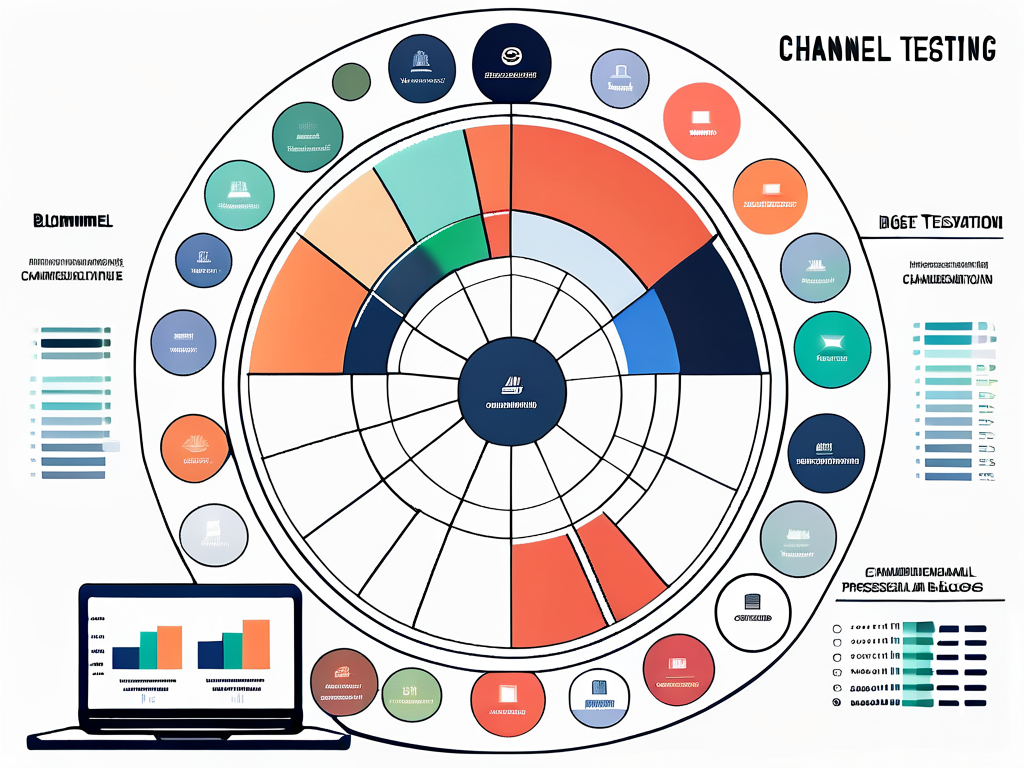Setting a Testing Budget for New Channels: A Comprehensive Guide
As businesses continue to explore new channels for reaching their target audience, it becomes crucial to allocate a testing budget specifically for this purpose. Testing new channels allows marketers to gather valuable insights, assess performance, and optimize their strategies. In this comprehensive guide, we will discuss the importance of setting a testing budget and explore key factors to consider when doing so. We will also provide steps to create a testing budget for new channels and highlight common mistakes to avoid. Let's delve into the details and help you navigate this crucial aspect of your marketing strategy.
Understanding the Importance of a Testing Budget
Testing is an integral part of any marketing strategy, especially when it comes to exploring new channels. A well-structured testing budget ensures that sufficient resources are allocated to assess the viability and effectiveness of these new channels. By setting aside funds specifically for testing, businesses can make informed decisions based on data-driven insights rather than assumptions or guesswork.
Moreover, having a testing budget in place allows for a systematic approach to experimentation. It enables marketers to conduct A/B tests, multivariate tests, and other forms of testing to gather valuable insights into consumer behavior, preferences, and trends. This iterative process of testing and refining not only enhances the effectiveness of marketing campaigns but also fosters a culture of continuous improvement within the organization.
The Role of Testing in Marketing Strategy
Testing underpins the success of your marketing strategy. It allows you to experiment with different approaches, measure their impact, and optimize based on the results. Whether you're testing a new social media platform, an emerging advertising channel, or a novel content distribution method, a dedicated testing budget helps you gauge the performance and potential of these channels.
Furthermore, a testing budget facilitates cross-channel comparisons, enabling marketers to assess the relative performance of various marketing channels. This comparative analysis provides valuable insights into the most effective channels for reaching target audiences, allocating resources efficiently, and maximizing overall marketing impact.
Financial Implications of Testing New Channels
When venturing into uncharted territories, it's important to acknowledge the financial implications of testing new channels. By setting a testing budget, you can determine the amount of funds required to explore these channels thoroughly. Moreover, this budget will give you a clear understanding of the potential return on investment (ROI) and the financial risks associated with each experimentation.
Additionally, a well-defined testing budget allows for contingency planning and risk management. It provides a structured framework for assessing the financial impact of unsuccessful tests and reallocating resources to more promising opportunities. This proactive approach to financial management ensures that testing efforts remain aligned with overall business objectives and strategic priorities.
Key Factors to Consider When Setting a Testing Budget
When establishing a testing budget, several key factors need to be taken into account. By carefully considering these factors, you can ensure that your budget aligns with your marketing goals and maximizes the chance of success.

One important aspect to consider when setting a testing budget is the timeline for achieving your marketing goals. Are you aiming for short-term wins or long-term growth? Understanding the timeline will influence the allocation of resources towards quick experiments versus more extended testing strategies.
Identifying Your Marketing Goals
Before setting a testing budget, it's crucial to have a clear understanding of your marketing goals. Are you looking to increase brand awareness? Drive lead generation? Improve conversion rates? Defining your goals will help you prioritize testing initiatives and allocate resources accordingly.
Furthermore, delving into the specifics of each marketing goal can provide valuable insights. For instance, if your goal is to improve conversion rates, you may want to focus on A/B testing different elements of your website or landing pages to optimize for user behavior and preferences.
Evaluating Channel Potential and Costs
Each channel comes with its own set of potential benefits, costs, and risks. Thoroughly evaluating the potential of new channels and estimating the associated costs will inform your testing budget. Consider factors like audience reach, engagement potential, cost per acquisition, and the expected return on investment.
Moreover, understanding the competitive landscape within each channel is crucial. Analyzing what strategies competitors are employing can provide insights into potential opportunities or gaps that your testing budget can address to gain a competitive edge.
Assessing Risk and Reward
When exploring new channels, it's essential to assess the inherent risks and potential rewards. Some channels may carry higher risks due to their novelty or uncertainty. Balancing risk and reward will help you allocate resources wisely and manage expectations effectively.
Additionally, considering the scalability of testing initiatives is vital. Identifying which tests can be scaled for broader impact based on initial results can help maximize the return on investment and inform future budget allocations for successful strategies.
Steps to Create a Testing Budget for New Channels
Now that you understand the key factors to consider, let's explore the steps involved in creating a testing budget for new channels. Testing new channels can be a crucial aspect of expanding your marketing reach and identifying new opportunities for growth.

Before diving into the specifics of budgeting, it's essential to conduct thorough research on the potential new channels you are considering. Understand the target audience, competition in that space, and the unique advantages and challenges of each channel. This research will provide valuable insights that can inform your budgeting decisions and increase the likelihood of success.
Defining Your Budget Parameters
Start by defining the overall budget you are willing to allocate for testing new channels. Consider factors like the size of your business, current marketing budget, and the potential impact of these new channels on your overall strategy. Once you have an initial figure in mind, break it down further into specific testing initiatives. By setting clear budget parameters, you can ensure that your resources are allocated efficiently and effectively.
Furthermore, consider creating a contingency fund within your budget to account for unexpected costs or opportunities that may arise during the testing process. This buffer can provide flexibility and allow you to capitalize on promising developments without disrupting your overall budget plan.
Allocating Resources Effectively
Allocate resources based on the importance and potential impact of each testing initiative. Consider factors like time, manpower, and financial investments required for each experiment. By prioritizing crucial initiatives and allocating resources accordingly, you can optimize your testing efforts. Additionally, consider leveraging cross-functional teams to bring diverse perspectives and expertise to the testing process, enhancing the quality of your experiments.
Monitoring and Adjusting Your Budget
A testing budget is not set in stone. It's vital to continuously monitor the performance of your tests and adjust your budget accordingly. Keep a close eye on the results, gather insights, and invest more in strategies that show promise. Similarly, reevaluate and reallocate resources from underperforming initiatives to avoid wasting valuable resources. By maintaining a flexible approach to budget management, you can adapt to changing circumstances and maximize the impact of your testing efforts.
Common Mistakes to Avoid When Budgeting for Channel Testing
While setting a testing budget can significantly benefit your marketing strategy, it's essential to be aware of common mistakes that can hinder your progress. By avoiding these pitfalls, you can make the most out of your testing efforts.

Overlooking Hidden Costs
When creating your testing budget, it's crucial to consider and account for hidden costs. These may include expenses like training, software subscriptions, or additional resources required for implementation and analysis. Accounting for these costs upfront will prevent unexpected financial strain.
For example, let's say you're planning to test a new social media channel. You may have accounted for the cost of running ads on the platform, but what about the time and resources needed to create compelling content specifically tailored to that channel? Overlooking these hidden costs can lead to budget shortfalls and compromise the effectiveness of your testing efforts.
Neglecting to Plan for Contingencies
Testing can sometimes yield unpredictable results or unforeseen challenges. By planning for contingencies in your testing budget, you ensure that you have the necessary resources to overcome obstacles and adapt your strategies as needed. This flexibility is essential for successful experimentation.
Consider a scenario where you're testing a new email marketing campaign. You may have allocated a budget for designing and sending the emails, but have you considered the possibility of low engagement rates or technical issues that may require additional troubleshooting? By planning for contingencies, such as allocating a portion of your budget for potential adjustments or optimizations, you can navigate any unexpected hurdles that may arise during the testing process.
Misjudging the Market Response
It's important to approach testing with an open mind and avoid assumptions about how the market will respond to your initiatives. Misjudging the market's response can lead to misallocation of resources and ineffective testing efforts. Stay receptive to feedback, adapt quickly, and adjust your budget accordingly based on the real-world response.
Imagine you're testing a new advertising campaign for a product targeting a specific demographic. You may have assumed that this demographic would respond positively to a particular messaging approach. However, through testing, you discover that the market's response is not as expected. By remaining open to feedback and adjusting your budget to explore alternative strategies, you can optimize your testing efforts and achieve better
